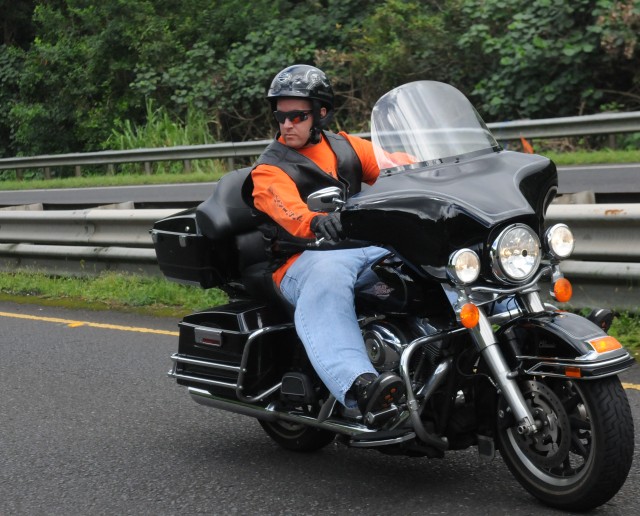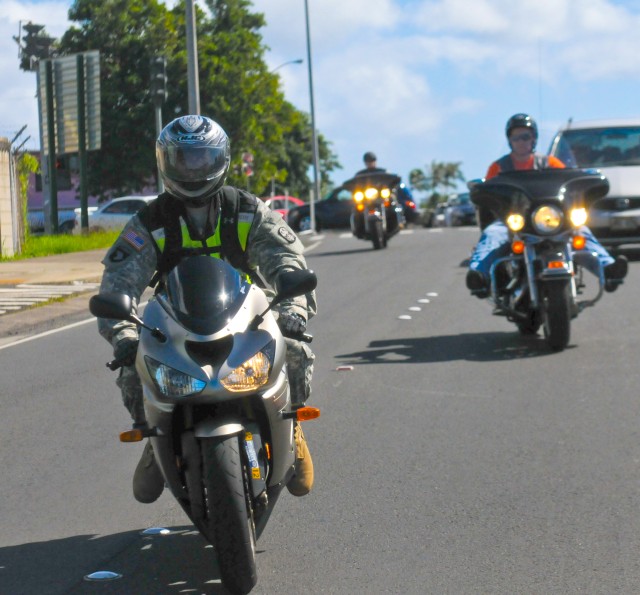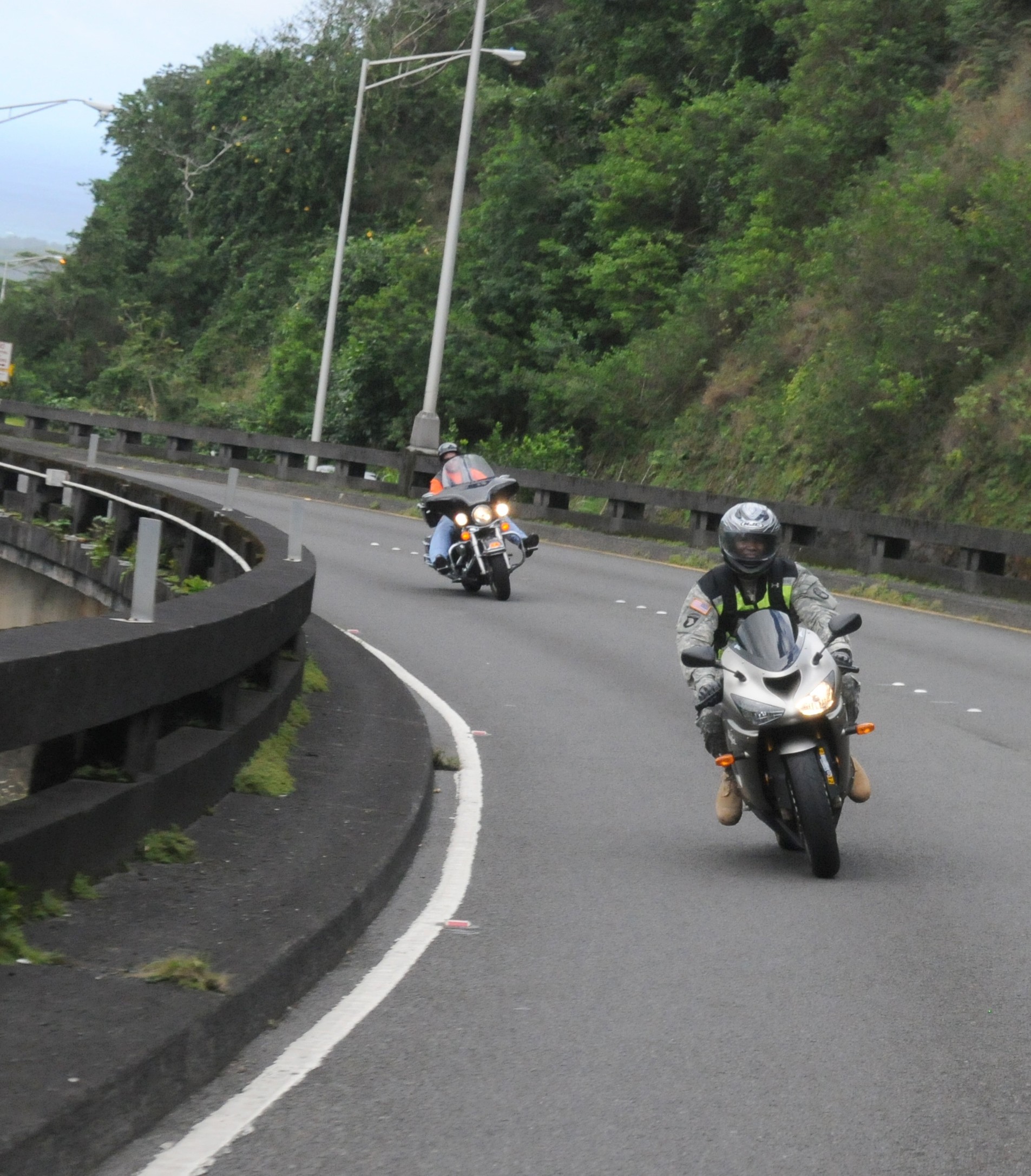FORT SHAFTER, Hawaii - Riding a motorcycle can be one of the most beautiful and liberating methods of transportation, but also has the potential of being one of the most dangerous.
The 94th Army Air and Missile Defense Command's motorcycle mentorship program took proactive measures to reduce the danger during a group safety ride Jan. 21 from Fort Shafter to the Nuuanu Pali lookout with intentions of promoting safety, familiarizing with road conditions and building camaraderie.
"Motorcycling will always be a high risk mode of transportation and past time activity. Even experienced motorcyclists become complacent on all aspects of motorcycling, especially, if they haven't ridden for awhile. Army Motorcycle Safety programs help mitigate that level of risk and number of casualties," said Sgt. 1st Class Edmundo Salero, spectrum manager, 94th AAMDC.
According to U.S. Army Combat Readiness/Safety Center, motorcycle accidents and fatalities have been on the incline which has made motorcycle training a top priority for the Army this year.
"Motorcycle accidents are a serious issue in the Army and a way to decrease them is through education, responsibility, experience and thorough leadership," said Sgt 1st Class Damion Johnlouis, noncommissioned officer in-charge of human resources, 94th AAMDC.
Motorcycle mentorship program's are part of a 2008 Army-wide initiative to decrease the amount of accidents and fatalities among Army motorcyclists.
"Motorcycle riders are still a small demographic with potentially catastrophic risks. The more that we get together to demonstrate how to ride safely, the more it will combat some of the cultural stereotypes of how bikers are supposed to ride," said 1st Sgt. Oubrinyahn Stonewall, first sergeant, Headquarters and Headquarters Battery, 94th Army Air and Missile Defense Command.
The safety activity included a thorough inspection of each bike and protective equipment, a brief on proper distance and formation for group rides, indentifying possible road hazards and traffic considerations, which was all put into practice during the group ride.
"For me, the activity was a good reminder and review of pre-ride inspections and how thorough you have to be to prevent accidents. Also, it was good situational awareness for motorcycling in Oahu compared to the mainland, because it is an island congested with many vehicles," said Salero.
The route was chosen because it challenged the riders with a diversity of road conditions, weather and traffic said Stonewall. It also gave the riders opportunity to experience a historically beautiful part of the Island.
"Having rides like this gives everyone involved a chance to share experiences, techniques, and many other pertinent information on riding. It also promotes group riding, two or more bikes, for leisure riding which provides greater visibility and safety on the road," added Salero. "It is a good program that should remain mandatory to all riders of different skill levels and experience."






Social Sharing